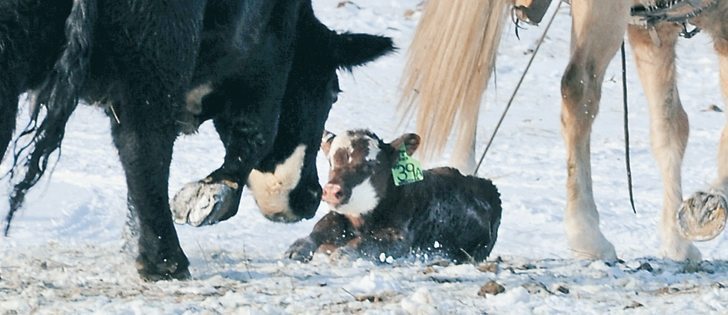Finding the best heifers to keep in a cow herd comes down to the magic numbers 65, 20 and 10.
Dr. Nathan Erickson of the University of Saskatchewan’s Western College of Veterinary Medicine says the best heifers are the most fertile, stay in the herd and fit a producer’s goals.
Reproductive success is critical to all of those factors, and calving distribution is easy to track.
Erickson said producers can calculate distribution by counting the number of calves born in the first 21 days of the calving season. Divide this number by the total number of cows exposed and multiply by 100 to determine the percentage calving in the first 21 days. The process can be repeated to determine how many are calving in each 21-day cycle that follows.
Read Also

Manitoba extends Crown land rent freeze
Manitoba government links the continued rental rate freeze on grazing and forage leases to economic and environmental challenges facing the industry
Ideally, 65 percent will calve in the first cycle, Erickson told the Saskatchewan Beef Industry Conference.
These are the cows that were cycling at the beginning of the breeding season and will be cycling in time for bull turnout the following year.
Twenty percent should calve in the second cycle and 10 percent in the third. The remainder would be open.
The earlier calves will be heavier at weaning, while having most of the calves born in one cycle leads to a more uniform calf crop for marketing.
“First cycle calves have an extra 40 days plus to grow,” Erickson said, even though calves can average the same weight no matter when they are born.
That affects the bottom line.
“If we ended up getting a third (of the calves) in all the cycles, I can easily say on 100 cows you’re selling three less calves.”
Producers can actively select to get the heifers that will provide those first-cycle calves.
Erickson said producers should keep those earlier calvers and select carefully from the second- and third-cycle calvers. There could be individuals in those groups that produced calves with phenomenal average daily gains or fit a particular program and could be cycling at the appropriate time the next year.
“But if we heavily select for the first, we have a higher chance of reproductive success,” Erickson said.
“You want 70 percent cycling at bull turnout.”
Keeping the bulls with the females for about 45 days is another way to select, although Erickson said that doesn’t work for all operations. Producers should pregnancy check no later than 100 days after bull turnout and then cull anything that’s in the later cycles, he added.
Erickson also said breeding heifers 30 days before the cows is important because producers have to think about the next breeding season.
The post-partum interval on heifers is 80 to 100 days compared to about 60 days for cows.
“If we want to keep them in our herd, you breed them 30 days before the cows and have a much higher chance of them rebreeding the next year and also a better chance of having them stay within our herd for the long term,” he said.
Proper nutrition and body condition score also determine how heifers perform.
karen.briere@producer.com
















